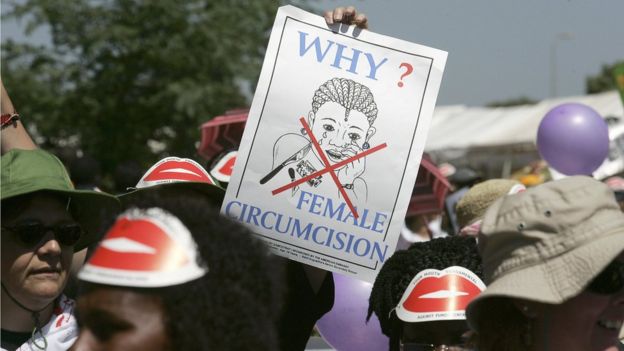Rates of female genital mutilation (FGM) have fallen dramatically among girls in Africa in the last two decades, according to new research.
The study, published in BMJ Global Health, cited a “huge and significant decline” among under-14s.
The practice involves removing all or part of a girl or woman’s external genitalia, including the clitoris.
Some societies treat it as a rite of passage, but human rights groups say it is inhumane and physically dangerous.
In the worst cases, victims can haemorrhage to death after they are cut, or die of infections.
Chronic pain, infertility and menstrual problems can also follow, as well as potentially fatal childbirth complications.
Unicef, the UN children’s agency, estimates that 200 million women and girls have undergone FGM worldwide – mostly in parts of Africa and the Middle East.
What did the figures show?
Using data from 29 countries and going back to 1990, the report’s authors found that the biggest fall in cutting was in East Africa.
The prevalence rate there dropped from 71% of girls under 14 in 1995, to 8% in 2016, the study said.

A demonstration against female genital mutilation in Nairobi
Some countries with lower rates – including Kenya and Tanzania, where 3-10% of girls endure FGM – helped drive down the overall figure.
In North Africa, the rate fell from almost 60% in 1990 to 14% in 2015.
West Africa also saw a significant drop, from 74% of girls in 1996, to 25% in 2017.
However, campaigners have observed that while younger children are most at risk, older teenagers and young women are also affected by FGM – and the study did not include them.
“We are pleased to see that the numbers are coming down in a lot of countries,” said Emma Lightowlers, a spokeswoman for the Africa-focused campaign group 28TooMany. “But it doesn’t tell the whole story and there are other groups where cutting takes place after the age of 14.
“It takes place in teenagers, or in fact, even in women in preparation for marriage,” she told the Thomson Reuters Foundation.
The team behind the report, which includes scientists based in Britain and South Africa, used data gathered for the Demographic Health Survey and Unicef, which covered almost 210,000 children.




























